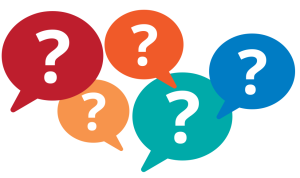Essential Element 1 Resources: Questions
Questions to Help Understand the Sexual Reproductive Health Issue among Urban Youth
 The SRH Problem
The SRH Problem
- What is the SRH problem?
- What factors contribute to the problem? What causes or contributes to those factors?
- Who is affected by the problem?
- What evidence demonstrates there is a health problem? Do you have evidence to show the burden of the health problem in your community?
- What recommendations or guidelines (i.e., national policies, clinical guidelines) exist related to the SRH problem?
Intended Audience
Identifying appropriate intended audiences:
- Who is the most affected by the SRH problem?
- Which audiences are your partners and stakeholders interested in reaching?
- Which audiences do you or your partners have access to?
- Which audiences fit in with your organization’s priorities?
- Who is most likely and willing to change their behavior?
Segmenting the intended audience:
- What are the segments in your intended audience? How do they differ from each other with regards to their behavior?
- Which audience segments are most affected by the problem?
- Which audience segments are most likely and most willing to change their behavior?
- How does your SBCC theory help you segment your audience (e.g., where are they along the Stages of Change)?
- What does your audience value in their life? What are their hopes and dreams? What do they want out of life?
- Who influences your primary audience?
Behavior
Selecting a behavior:
- What is the current behavior of your intended audience?
- What is the most realistic behavior change for the intended audience to adopt?
- Will a change in this behavior actually affect the problem?
- Should you select one behavior or a series of behaviors?
Understanding barriers and facilitators to behavior change for your intended audience:
- What might keep the audience from adopting the new behavior?
- Are there environmental factors that play a role? What are they?
- Are there policies or standards (for example, government laws or corporate policies) that either help or hinder the behavior change?
- What makes the audience’s current behavior easy? What makes the desired behavior difficult?
- Is it a measurable behavior? Is it observable? How would you measure it?
- What happens on days when your audience is successful at doing the desired behavior? What’s different about those days? What made it easier to do it on that day?
- What about days when your audience does not do the desired behavior? What happens on those days? What is different?
- Where does the audience have the opportunity to try the desired behavior? Where don’t they?
Benefits of the behavior:
- What does your intended audience like about the desired behavior?
- What is appealing about it?
- What benefits can you reasonably offer to your audience?
- What new behavior will be easiest for them to adopt?
- What could they fit into their lives?
- Does your audience believe the desired behavior will provide them with a certain benefit? What do they think and how do they feel about that benefit?
- Does the audience believe they can do the behavior?
Barriers to the behavior:
- What does your audience not like about the desired behavior?
- What is unappealing about changing their behavior?
- What things keep them from doing the behavior? (costs/barriers)
- What costs/barriers do you have the ability to modify or reduce?
Intervention Strategy
- What strategies were used in past interventions with similar goals? Who was the intended audience of those interventions? How are the audiences similar to or different from your intended audience?
- Which strategies are promising?
- Which strategies have not worked in the past?
- Are there strategies that have been fully evaluated or draw on a base of evidence?
Communication Channels
- Where does the audience get information about the desired behavior?
- Where does the audience spend time?
- Who influences or could influence your audience to do the desired behavior? To start it? To maintain it?
- Who do they listen to about this behavior? Who is a credible source of information? Who is most motivating? (i.e., this helps for identifying spokespersons and channels of communication)
- Who would be a credible source of information for the audience about the health topic or about the behavior?

